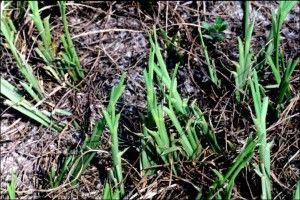Grub Worms
Central Florida Gray Leaf Spot Control Specialists
Grub Worms
Young caterpillars, or larvae, injure turf grass by chewing notches along the edge of the leaves. This creates a ragged appearance that may be hard to notice at first. Mature caterpillars eat a lot before they pupate and consume patches of turf grass down to the crown. Because the turf looks scalped so quickly, people think that the damage occurs “overnight.” Several caterpillar species can be turf grass pests, including the tropical sod webworm, the fall army worm, and the striped grass looper.
Identification
Tropical sod webworm larvae are gray-green, have brown spots on each segment, and are the smallest of the three species. Mature larvae can be 3/4 to 1 inch in length, and they pupate in the thatch or on the soil surface. Fall army worm larvae can be green or brown, and mature larvae are 1½ inches long with four pairs of prolegs (fleshy legs on abdomen). As larvae grow, light stripes appear along the length of the body and dark spots appear on the top of each segment. Fall army worm larvae have an inverted light-colored Y on the front of their heads. They pupate in the soil. Striped grass looper larvae have longer and thinner bodies and “loop” like inchworms when crawling. They only have two pairs of prolegs. Their color ranges from cream to black, there is a light-colored narrow stripe down their backs, and many stripes on their heads. Striped grass loopers pupate on tall pieces of grass or small shrubs,


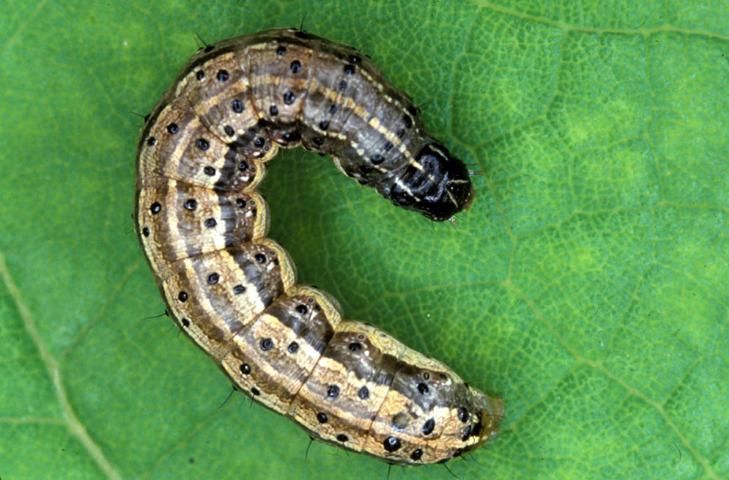
Tropical sod webworm adults are small, tan to gray moths with a wingspan of ¾ to 1 inch. They do not cause damage. Moths hide in shrubs and other sheltered areas during the day and fly low when disturbed. Females lay clusters of 6-15 white eggs on grass blades at night. Eggs darken to brown and hatch within 7 days. Fall armyworm adults are larger, with a wingspan of nearly 1½ inches. Females are almost all gray, but males are shaded gray and brown and have white spots near the center of the wing and near the tip. Fall armyworm eggs are laid in clusters of 50-150 along grass blades or on non-plant surfaces. Eggs are gray in color and coated with moth scales. Striped grass looper adults are the largest of the group, with a wingspan of 1½ inches. Wings are tan to yellowish-brown in color with vertical lines and round spots. Eggs are laid singly on grass blades.
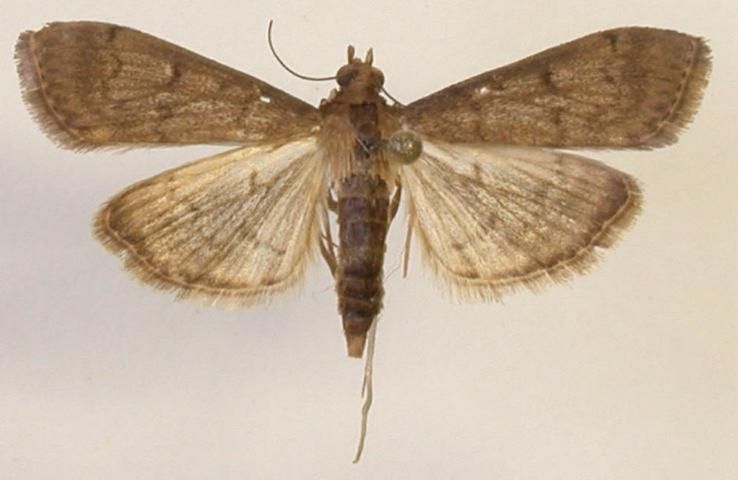
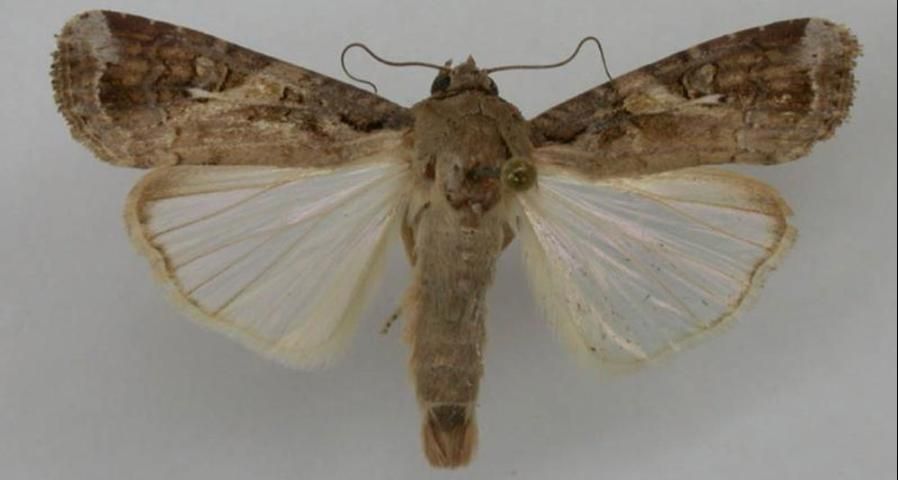
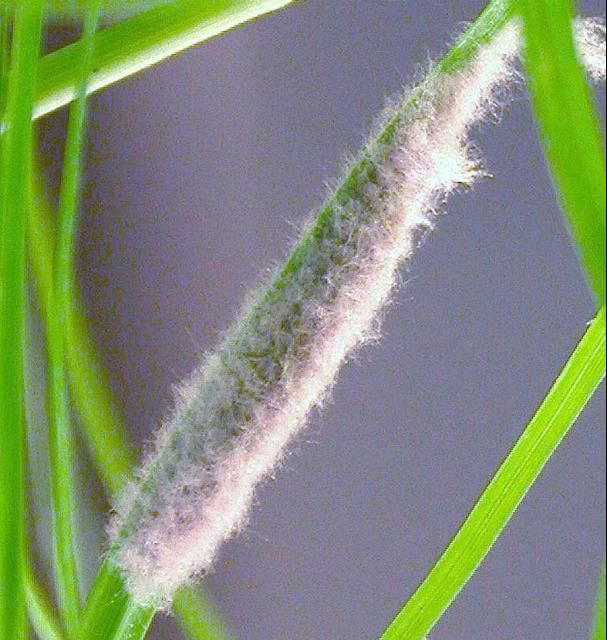
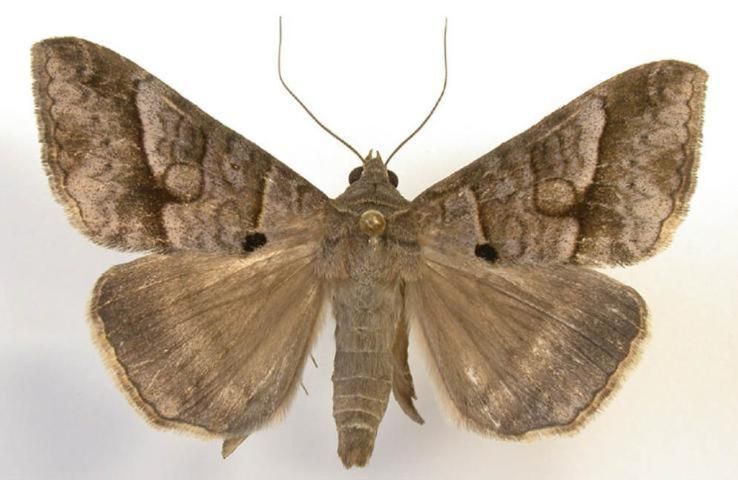
Biology and Monitoring
Tropical sod webworm is most active from April through November in north Florida, but may occur year-round in south Florida. Three to four generations occur in Florida each year. Tropical sod webworm larvae feed on St. Augustine grass, bermuda grass and zoysia grass. Fall army worm occurs year-round in south Florida and migrates northward each spring. This means that populations can be damaging in the spring in south Florida, but don’t build up until fall in north Florida. Fall army worm will feed on all turf grasses, but prefers bermuda grass. Striped grass looper also occurs year-round in south Florida, and isn’t a problem until fall in north Florida. Striped grass looper is primarily a pest on bahia grass in pastures, but will readily infest other turf grasses. Larvae of these species are active at night and will hide in a curled position near the soil surface during the day. Fall army worm larvae may also feed during the early and later parts of the day. Green or brown pellets of frass may be visible on the soil surface, indicating that larger larvae are present. One generation of tropical sod webworm is about 6 weeks; fall arm yworm and striped grass looper can develop in about 4 weeks under warm weather conditions.
To find larvae, part the grass in suspect areas and look for chewed leaves, silken webs, green or brown frass, and larvae. Use soap flushes (2 TBSP liquid dishwashing soap mixed in 2 gallons of water) to drench larvae or other potential pests out of the ground. Pour the mixture on 1 square yard of damaged grass, and observe after 5 minutes. If nothing emerges, examine several other areas.
The adults (moths) of all three species are active from dusk till just after dawn. A commercially available sex pheromone lure can be used to monitor fall army worm. The sex pheromone for striped grass looper is known but not available. Researchers are currently determining the sex pheromone for tropical sod webworm.
Management
Damage Thresholds
The number of larvae that can cause significant damage depends on the turf grass variety, how stressed it might be, and how tolerant the turf grass managers or their clients are to damage. In general, most turf grasses can tolerate the notching damage that young larvae cause, but three 1/2 inch, mature fall army worm or striped grass looper larvae per square foot may justify a treatment. About 10 to 20 tropical sod webworm could warrant treatment. Keep in mind that large larvae may pupate quickly, which may make an insecticide application unnecessary or ineffective.
Request Service
Request a Free Estimate
Fill out the form below. This form will take less than a minute to complete.
* indicates required fields

